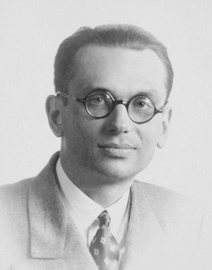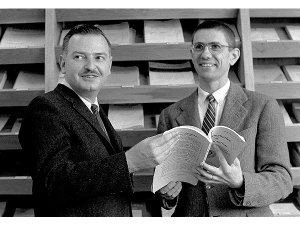
Prank calling used to be a common, albeit annoying, form of entertainment back in the days when I grew up, before the invention of caller ID ruined it forever. Some prank calls were just simple and stupid jokes, such as the “do you have Prince Albert in a can?” call. On a slightly more elevated level of maturity, there was the anti-corporate “screw the phone company” philosophy of prank calling. As an example, I remember in college my friends and I decided to call Victoria Land in Antartica. When the British operator asked who would pay for the call, we asked that it be charged to Her Majesty the Queen. We were informed very politely that that would not be possible. So we told her to make the call collect to Admiral Byrd. Amazingly she accepted that as legit. She then said it would take two hours to make the connection. Unfortunately, as I recall, we never got through to the good admiral.
Before you get too judgmental about this kind of activity, recall that Steve Wozniak and Steve Jobs got their start together by “phone phreaking,” designing (Steve #1) and selling (Steve #2) so-called “blue boxes” which were used to make long-distance calls without paying. So, as juvenile and even illegal as pranking the phone company might have been, you might not be holding that iPhone in your hand right now if not for it.
The most memorable prank call of all occurred the night some of my friends and I decided to call Kurt Gödel and ask him to help us with our homework. Gödel was a mathematical genius, most famous for his “Incompleteness Theorem.” The essence of this theorem is that in any mathematical system at least as complex as simple arithmetic, there are theorems that are true but can’t be proven. The actual mathematics of his proof are complicated. My limited understanding is that he found a way to translate mathematical statements into numbers (called Gödel numbers) and then show that you can use these numbers to represent a statement that states “this statement is not provable.” If this all sounds like gobblygook, there is a whole book that explains this (and a whole lot more) better than I can, Douglas Hofstadter’s classic Gödel-Escher-Bach, An Eternal Golden Braid. In the minds of many mathematicians and philosophers, there is something mystical in Gödel’s proof. Depending on how you look at it, the fact that there are truths that can’t be proven is either disturbing or profound or both. Some have felt the proof has implications as to whether machines can ever develop consciousness, and the self-referential nature of the proof may even have something to do with our own consciousness.

My friends and I were learning about all this in a logic class taught at Dartmouth in the early 1970s. One of the texts we used in the class was Nagel and Newman’s book, Gödel’s Proof. While struggling though this text, we collectively got stuck on some point that we didn’t understand. Unfortunately I don’t remember the exact question we had, or whose idea it was to call Dr. Gödel to see if he could answer the question. But for whatever reason (possibly fueled by low doses of intoxicants), it seemed at the time to be an excellent idea. Who better to answer a question about Gödel’s proof than Gödel himself?
We knew that Gödel worked at Princeton (where he had been good friends with Einstein), so we called directory assistance for Princeton, New Jersey and obtained his home phone number without difficulty. We then, sitting in a circle on the floor of my dorm room, called him. My friend Bob Lindgren, the boldest of the bunch, made the actual call while we all listened in.

Dr. Gödel answered the phone himself, and we all listened to the tinny German-accented voice with amazement. Bob said we were students at Dartmouth College studying his incompleteness theorem, and we had some questions. Professor Gödel very pleasantly said he would be happy to answer any questions, referring to our school as “Dartmoor,” and asked how his friend John Kemeny was doing. Professor Kemeny was president of Dartmouth at the time, was another colleague of Einstein’s, and was an early computer pioneer, coinventing with Tom Kurtz the BASIC computer language. Of course none of us were on speaking terms with Dr. Kemeny, but that didn’t stop us from reassuring Dr. Gödel that his old friend was doing just fine. We promised we would give him Dr. Gödel’s best wishes the next time we saw him. We then proceeded to ask our logic questions to Dr. Gödel, who was gracious enough to waste his evening and precious genius explaining simple mathematical concepts to awestruck college kids. I don’t remember many details of the conversation, though I do remember one thing we asked him that may offer some insight into how he worked. We asked him if the idea for his proof came to him all at once as a Eureka moment, or if it was something that developed more gradually. He replied that it was definitely not a sudden insight. Instead it was something that he worked on over many years. He said he had a broad idea where he was going with his idea from the beginning, but it took his filling in the details over a long period of time before he got the result he wanted.
We thanked him for his help and he wished us well. He died a few years later, in 1978. Today in the world of mathematics his work is considered to be comparable in significance to Einstein’s Theory of Relativity in the world of physics. I am not a mathematician and I find Gödel’s incompleteness theorem difficult to grasp — slippery, self-referential and paradoxical, much like thinking about the nature of consciousness. Maybe the two are related after all. On a more practical note, Gödel’s story about how he came up with his proof leads to the profound yet common-sense (the two aren’t necessarily at odds) notion that creating something new and wonderful requires more than just good ideas. It requires hard work, and lots of it. This is important to realize, even for those of us who are not geniuses.
What ever you said was right..Thank you..Keep on posting..
http://www.clashofclansapk.com/
I can’t believe this story, wow what luck! I used to live in Princeton and I’ve read both the Hofstadter and Nagel texts. Amazing to think you just rang him up, thanks for sharing
It was a simpler time when you could just call an operator and get someone’s telephone number. I’m surprised it was unlisted. I think Dr. Gödel was surprised that he had fans.